All,
I was running some semiconductor devices at low overvoltage (12 keV) for Ni Ka, because I wanted to improve the spatial resolution slightly, when I noticed an oddity of the PHA scans that I cannot understand. Please chime in with any ideas you all might have:
I ran Ti Ka and Ni Ka both on large (LLIF) crystals, both at 1880 bias voltage on pure metals and noticed that I was getting more Ni Ka counts than Ti Ka counts on the standardization as seen here:
Drift array standard intensities (cps/1nA) (background corrected):
ELMXRY: si ka o ka al ka ti ka ni ka au ma sn la
MOTCRY: 1 PET 4 PC1 2 LTAP 3 LLIF 3 LLIF 1 PET 5 PET
STDASS: 514 913 913 522 528 579 550
195.49 288.04 1985.67 191.20 249.41 48.50 192.86
192.90 287.83 1980.98 189.32 247.61 48.47 193.07
I thought that was odd because I'm running Ti Ka at what might be considered an "ideal" overvoltage, e.g., 2.4 for Ti Ka versus 1.4 for Ni Ka (both run at 12 keV). Also, it is well known that on Cameca Ar detectors, even with the increased 2 atm gas pressure, a significant fraction of high energy x-rays will go through the gas absorption path without getting detected. To be fair, because they are flow detectors as opposed to sealed detectors, they are very clean and low noise, but if one assumes an 2 cm absorption path of Ar at 1 atm, about 60% of the Ni ka x-rays transmit through Ar as seen here in this dialog from our CalcZAF utility:
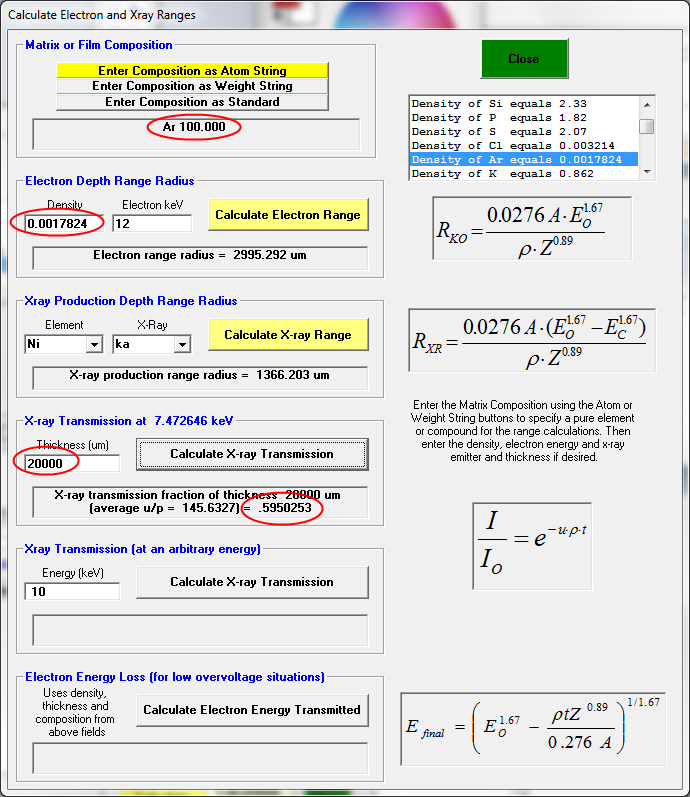
and at 2 atm, there is still almost 40% of the Ni ka x-rays are not absorbed by the detector as seen here:
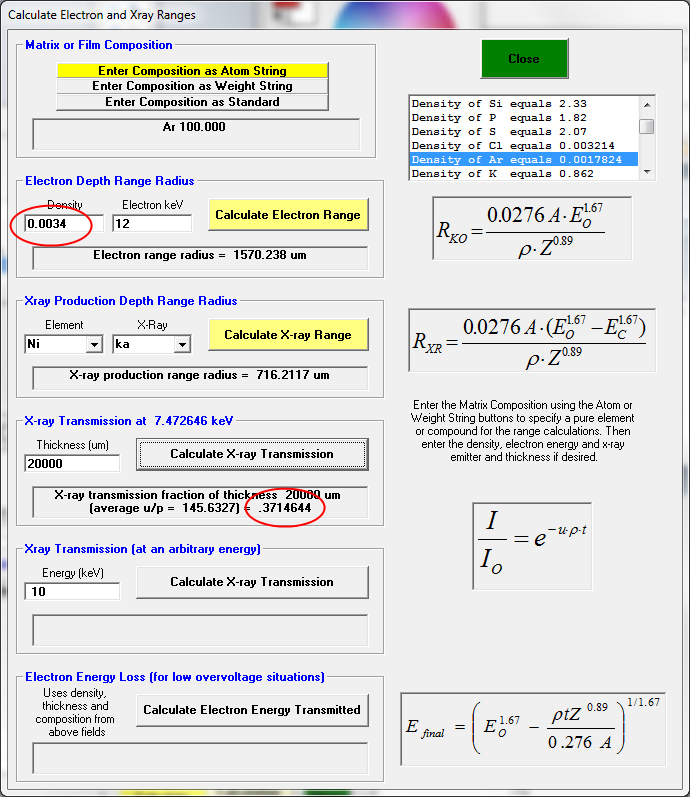
This makes a lot of sense because the MAC for Ti Ka in Ar is 581 and the MAC for Ni Ka in Ar is only 145. In fact, if we do the same calculation for Ti Ka in CalcZAF, we see that almost no Ti Ka x-rays are transmitted through the detector and instead get counted properly:
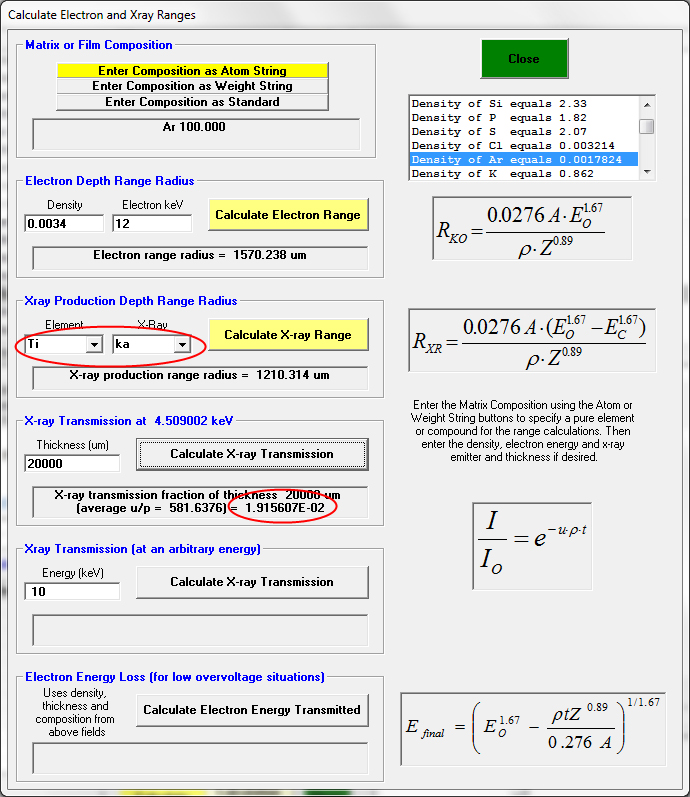
So, about those PHA scans? Well they agree with the standardization data. Basically we ran bias scans on both elements and they both showed an optimum voltage of around 1880 volts as seen here for Ti Ka:
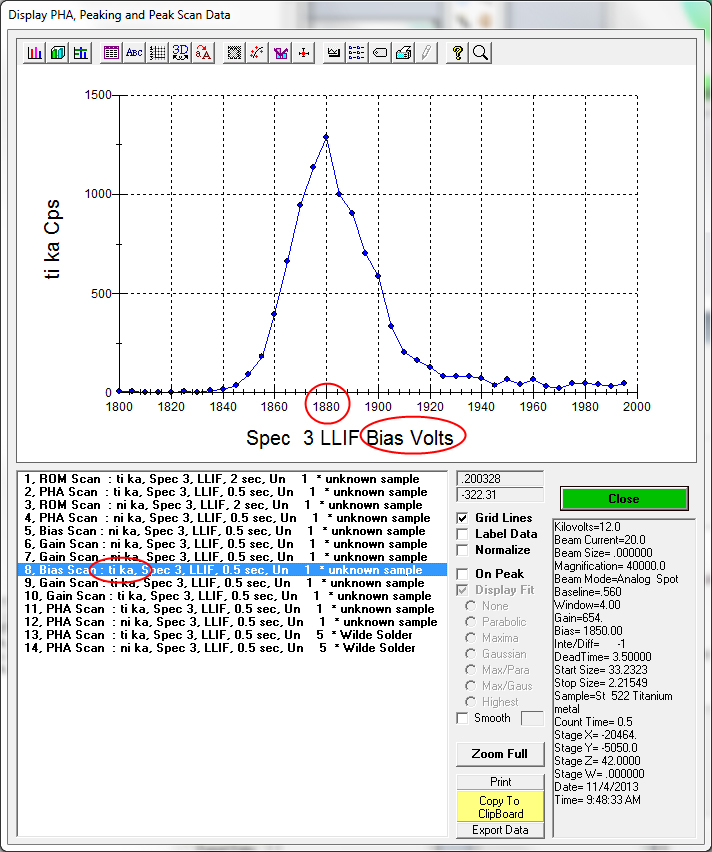
and here for Ni Ka:
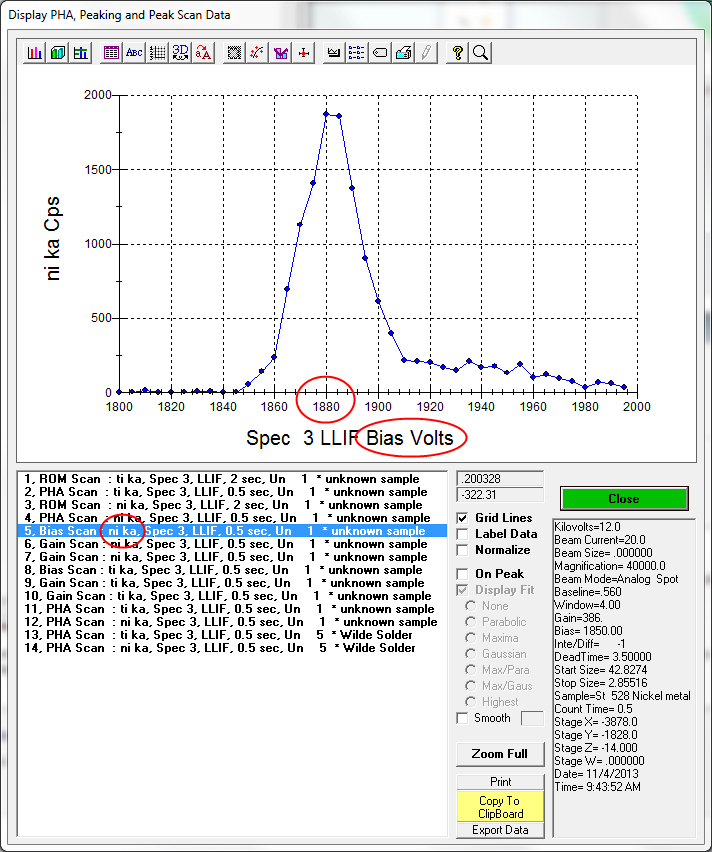
The optimum gain settings from the gain scans showed 820 for Ti Ka and 490 for Ni Ka, also not unexpected as Ni Ka is more energetic and requires less gain. The final PHA scans with these settings are here for Ti Ka:
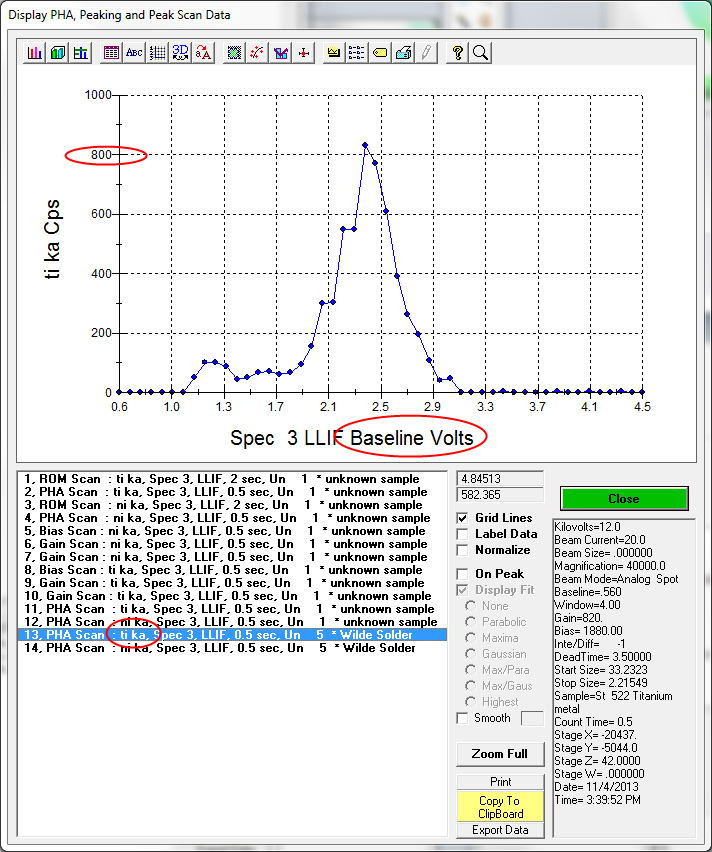
and here for Ni Ka:
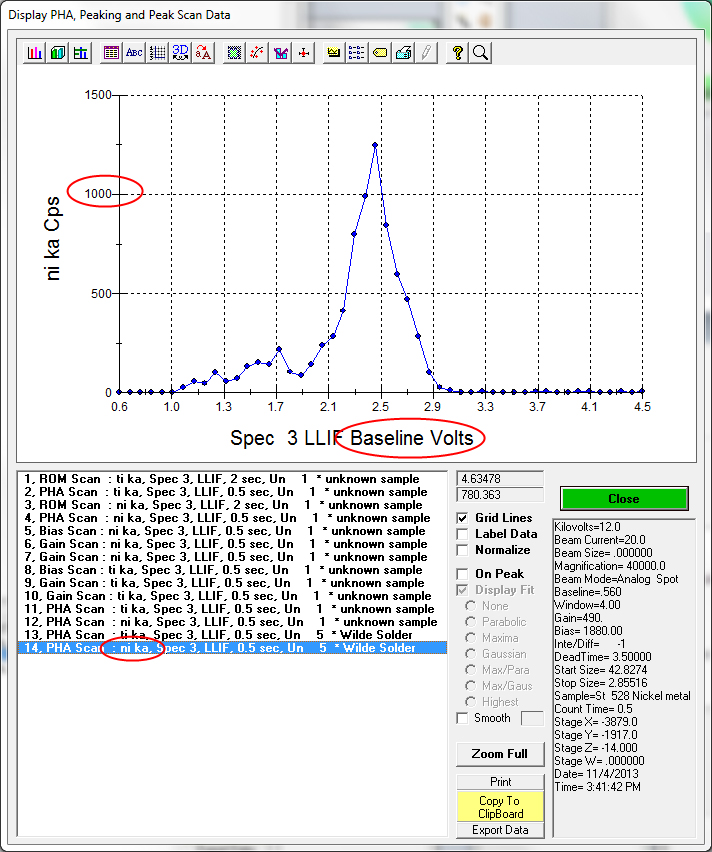
So both the standardiations and PHA scans show that we are getting a better signal from Ni Ka than Ti Ka on LLIF. I do not understand this result and would welcome any speculation.
Thanks!
Here's one idea: could the difference in the Bragg spectrometer positions change the geometric efficiency of the two elements by that much? I mean, the sin thetas are *not* that much different:
ELEM: ti ni
ONPEAK 68220.0 41134.0
OFFSET 71.3984 73.0977
HIPEAK 68705.8 42319.9
LOPEAK 67734.2 40276.7
HI-OFF 485.805 1185.90
LO-OFF -485.80 -857.30